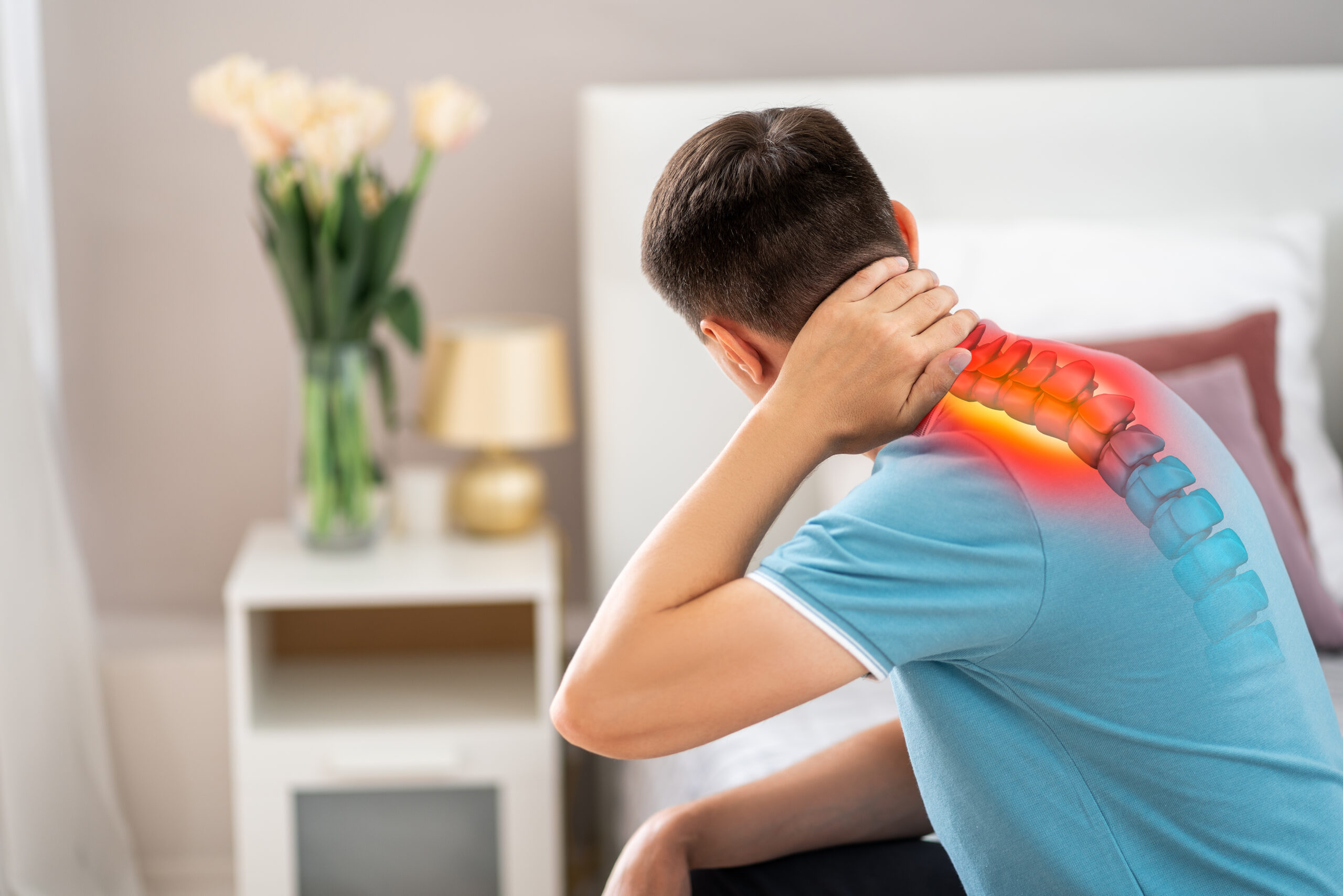Cervicogenic headaches (CGH) are secondary headaches characterized by unilateral pain originating from the neck and radiating towards the frontal-temporal region of the head. They are often provoked by neck movements, sustained awkward head positions, or external pressure over the upper cervical or occipital region.
Etiologies
Cervicogenic headaches typically arise due to issues in the cervical spine and its components, including the intervertebral discs, facet joints, and surrounding musculature. Trauma, such as a whiplash injury, can trigger CGH due to the irritation or damage of the cervical nerves. Similarly, chronic poor posture, especially in people with desk jobs or who frequently use mobile devices, can cause strain on the neck muscles leading to the onset of these headaches.
Other potential etiologies include cervical osteoarthritis, a degenerative condition of the cervical spine, and cervical spondylosis, a general term for age-related wear and tear affecting the spinal disks in the neck. More rarely, tumors, infections, or fractures may cause CGH.
Diagnosis
Diagnosing CGH can be challenging as its symptoms often overlap with those of other headache types. The primary method of diagnosis is through a thorough clinical examination and patient history, focusing on the neck. The International Classification of Headache Disorders offers criteria for the diagnosis, including headache triggered by neck movements, posture, or pressure on the tender points in the neck region.
Imaging studies like MRI or CT scans may be used to further evaluate the structures of the neck and exclude other potential sources of the headache. Additionally, diagnostic nerve blocks can provide definitive evidence of cervicogenic headache. If a nerve block in the cervical region alleviates the headache, it points towards a cervicogenic cause.
Treatment
The management of CGH involves a combination of non-pharmacological and pharmacological interventions, and in some cases, surgical procedures. Non-pharmacological treatments focus on physical therapy and behavioral changes. Physical therapy, including posture correction, neck strengthening exercises, and manual therapy, has shown effectiveness in relieving symptoms. Behavioral changes might include ergonomic modifications at work or home to reduce strain on the neck.
Pharmacological treatments encompass over-the-counter pain relievers like non-steroidal anti-inflammatory drugs (NSAIDs) or more potent prescription medications, such as muscle relaxants or certain types of antidepressants that can help manage chronic pain.
In more severe or refractory cases, interventional treatments such as nerve blocks, radiofrequency ablation, or botulinum toxin injections may be considered. Surgery is typically a last resort and might be needed if the cause of the headache is due to a structural abnormality that needs correction.
Patient education is also crucial in managing CGH, as understanding the condition can help people make necessary lifestyle modifications and adhere to their treatment plans.
In summary, cervicogenic headaches are a common but often underdiagnosed cause of chronic headache. With a multidisciplinary approach involving correct diagnosis, physical therapy, medications, and possibly interventional procedures, many patients with CGH can experience significant symptom relief and improved quality of life.
